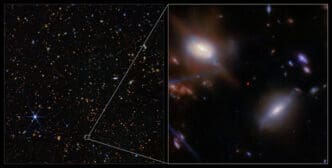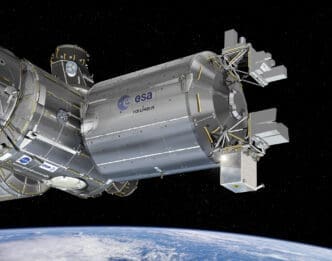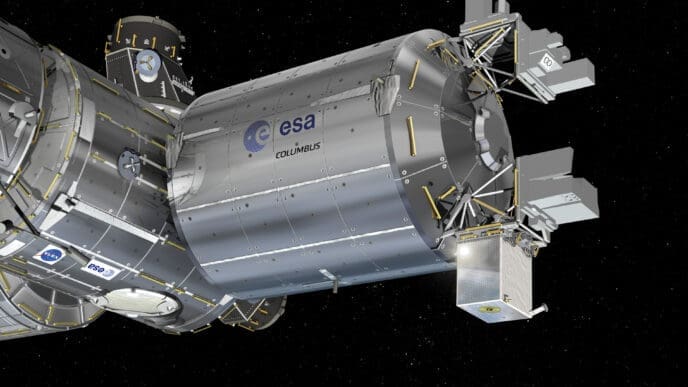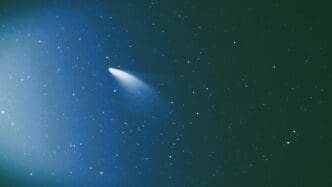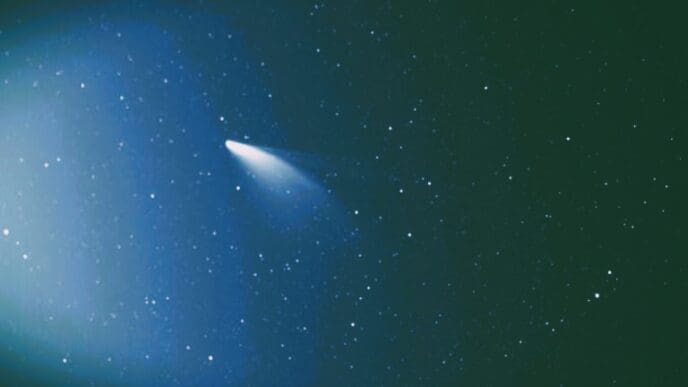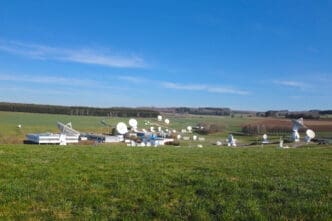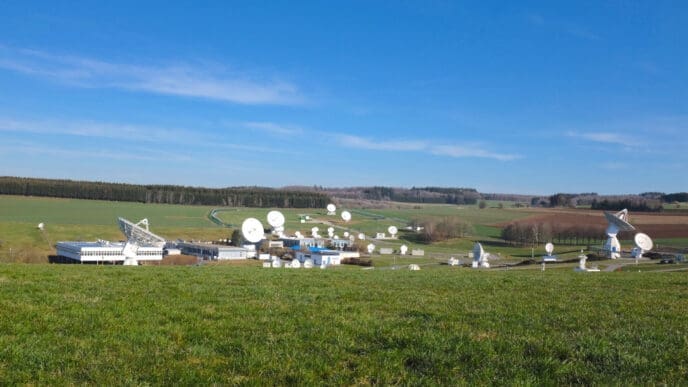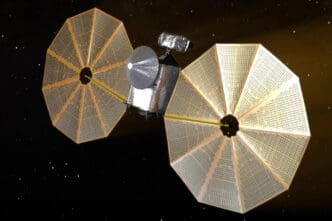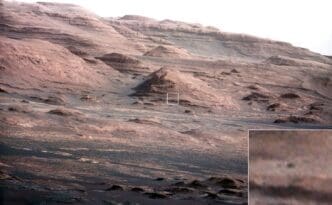Utilizing the exceptional infrared sensitivity of the NASA/ESA/CSA James Webb Space Telescope, scientists are delving into the mysteries of ancient galaxies to unlock the secrets of the early universe. An international team of astronomers recently identified a bright hydrogen emission from a galaxy existing at an unexpectedly early period in the universe’s history. This surprising discovery is challenging experts to unravel how this light managed to penetrate the dense fog of neutral hydrogen that pervaded space during that epoch.
A core mission objective of the James Webb Space Telescope is to explore further into the distant past of the universe, focusing on the formation of the first galaxies after the Big Bang. This mission has already led to the discovery of record-breaking galaxies through programs like the JWST Advanced Deep Extragalactic Survey (JADES). Webb’s remarkable sensitivity to infrared light is paving new research paths into the timelines and processes of galaxy formation and their influence on the universe during the era known as cosmic dawn.
In a recent study, researchers scrutinizing a primordial galaxy made a groundbreaking discovery within its light spectrum, challenging current understandings of the universe’s early history. The Webb telescope uncovered JADES-GS-z13-1, an incredibly distant galaxy observed merely 330 million years post-Big Bang, through images captured by Webb’s NIRCam (Near-Infrared Camera) as part of the JADES program. By analyzing the galaxy’s brightness across various infrared filters, scientists estimated its redshift, a measure of a galaxy’s distance from Earth based on the stretching of its light through expanding space.
The NIRCam imaging initially suggested a redshift of 12.9. To confirm this significant redshift, an international team led by Joris Witstok from the University of Cambridge, alongside the Cosmic Dawn Center and the University of Copenhagen, examined the galaxy with Webb’s Near-Infrared Spectrograph (NIRSpec) instrument. The resulting spectrum verified a redshift of 13.0, indicating the galaxy’s existence 330 million years after the Big Bang—an astonishingly early stage in the universe’s 13.8 billion-year history. Surprisingly, the spectrum also revealed a distinctly bright wavelength of light, identified as Lyman-alpha emission from hydrogen atoms, far more intense than previously considered possible for such an early cosmic period.
“The early universe was enveloped in a thick haze of neutral hydrogen,” explained Roberto Maiolino, a team member from the University of Cambridge and University College London. “Most of this haze dissipated through a process called reionization, completed about one billion years after the Big Bang. GS-z13-1 is visible when the universe was only 330 million years old, yet exhibits a remarkably clear, characteristic Lyman-alpha emission that should only appear once the surrounding fog has entirely dissipated. This observation defies existing theories of early galaxy formation and has taken astronomers by surprise.”
During the reionization epoch, immense quantities of neutral hydrogen fog surrounding galaxies blocked any energetic ultraviolet light they emitted, similar to how colored glass filters light. Only once sufficient stars formed to ionize the hydrogen gas could such light, including Lyman-alpha emission, escape these nascent galaxies to reach Earth. Consequently, the confirmed Lyman-alpha radiation from this galaxy profoundly impacts our understanding of the universe’s early phases.
Kevin Hainline of the University of Arizona remarked, “We really shouldn’t have discovered a galaxy like this, given our comprehension of the universe’s evolution. We can liken the early universe to being shrouded in a thick mist, making it exceedingly difficult to detect even potent lighthouses. Yet, we observe this galaxy’s light piercing the veil. This captivating emission line has vast implications for understanding when and how the universe reionized.”
The Lyman-alpha radiation source from this galaxy remains uncertain, but it may involve the initial light from the universe’s first star generation. Joris Witstok elaborated, “The large bubble of ionized hydrogen surrounding this galaxy might result from a unique star population—much more massive, hotter, and luminous than stars formed in later epochs, potentially representing the first generation of stars.” Another possibility, identified by the team, is a powerful active galactic nucleus (AGN), powered by one of the universe’s earliest supermassive black holes.
These groundbreaking results were unattainable without Webb’s extraordinary near-infrared sensitivity, crucial for locating such distant galaxies and examining their spectra in intricate detail. Peter Jakobsen of the Cosmic Dawn Center and the University of Copenhagen reflected, “Following in Hubble’s footsteps, Webb’s ability to find increasingly distant galaxies was evident. However, as demonstrated by GS-z13-1, its revelations about the nature of embryonic stars and black holes forming at cosmic time’s brink were bound to surprise.”
The team intends to conduct further observations of GS-z13-1, aiming to unravel more about this galaxy’s nature and the origin of its intense Lyman-alpha radiation. Regardless of what secrets the galaxy holds, it is sure to illuminate new frontiers in cosmology.
This research has been published in Nature. The data emerged from JADES under JWST programs #1180 (PI: D. J. Eisenstein), #1210, #1286, and #1287 (PI: N. Luetzgendorf), and the JADES Origin Field program #3215 (PIs: Eisenstein and R. Maiolino).
More Information
Webb is the largest and most powerful telescope ever launched into space. Under an international collaboration agreement, ESA provided the telescope’s launch service, employing the Ariane 5 launch vehicle. In partnership with others, ESA was responsible for the development and qualification of Ariane 5 adaptations for the Webb mission and the procurement of the launch service by Arianespace. ESA also contributed the NIRSpec spectrograph and 50% of the mid-infrared instrument MIRI, developed and built by the MIRI European Consortium, in partnership with JPL and the University of Arizona. Webb is a collaborative effort between NASA, ESA, and the Canadian Space Agency (CSA).

